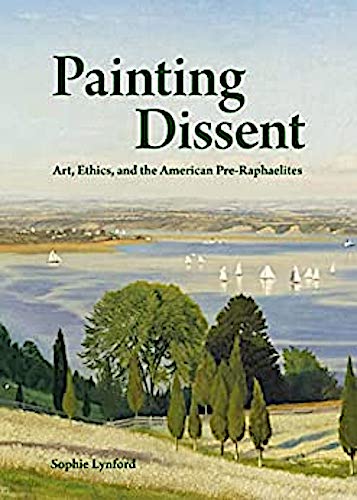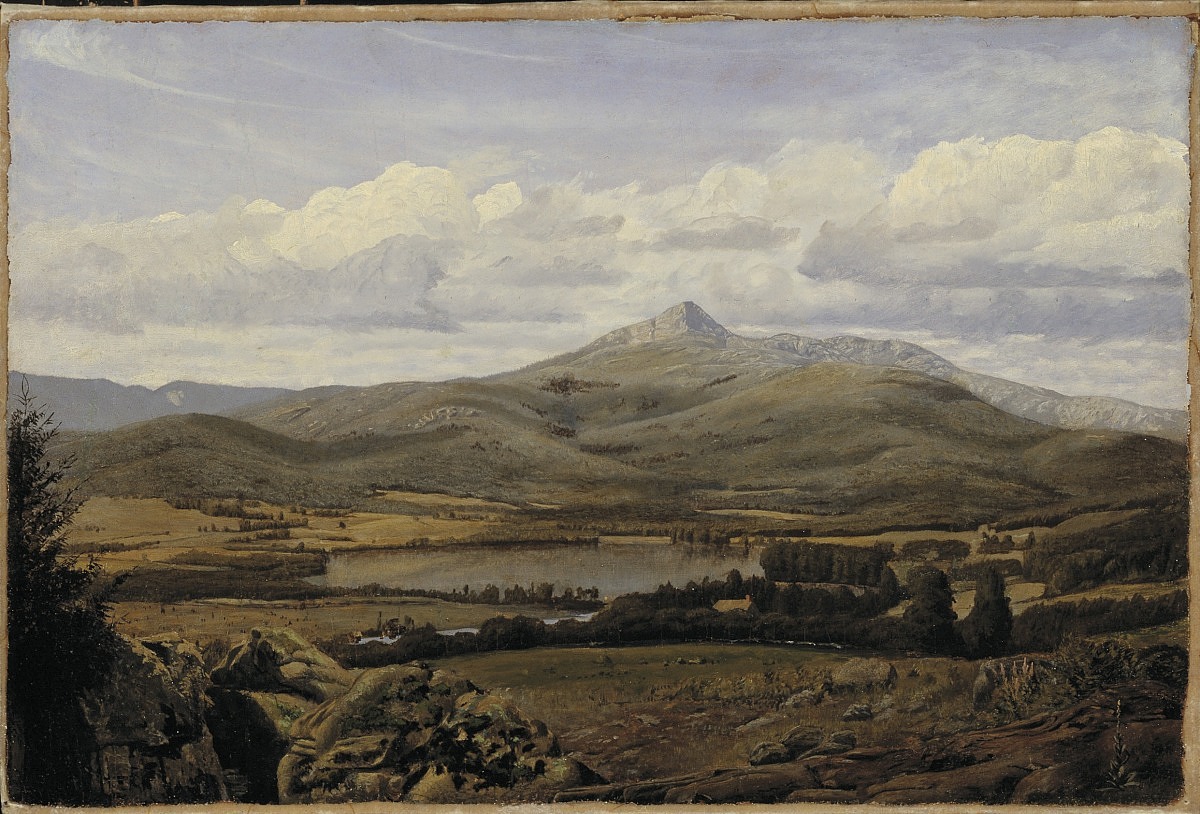
Revisions of Pre-Raphaelitism are not lacking at this time and, while some manifestations of this energy are muddying the water, replacing sound method and practice with modish approaches and wobbly scholarship, others are offering in convincing manner new material, fresh ideas and additional names for the hall of memory if not the roll of honour. Here, Sophie Lynford makes a valuable contribution not only to the account of Pre-Raphaelitism but to the history of nineteenth-century American painting, to Ruskin studies and to the social history of art in the Victorian period. Following the exemplary work of one of her teachers at Yale, Timothy Barringer, she brings together for the reader's consideration a closely-studied examination of a progressive vein in the art of the United States inspired at the mid-century equally by the writings of John Ruskin and a disdain for the self-congratulatory state of landscape painting in their country that recalls the original Pre-Raphaelites' energetic rejection of Britain's artistic legacy of 'slosh'.
The person who spearheaded US Pre-Raphaelitism was William Stillman (1828-1901), born to dissenting English expatriates and as a young man torn between a career choice of painting and journalism. Meeting Ruskin when in England in 1850, he became keen to combine the ideas of the author of Modern Painters (whose first two volumes were published in the US soon after their appearance in 1843 and 1846) with those of Ralph Waldo Emerson, to produce a landscape painting fit for the time and place more ethically than commercially driven. He believed he had also seen a truer love of nature in the Barbizon painters whom he encountered in France in 1853.
In 1854, when his own landscapes began to appear in east-coast exhibitions, Stillman called for American artists to adopt Pre-Raphaelitism to counteract the self-serving and bombastic fictions of what is now known as the Hudson River School ("I learned from [Frederick] Church nothing that was worth remembering", wrote Stillman in his autobiography in 1900). This message was amplified in his journal The Crayon, begun with Ruskin's blessing in 1855. Running regular bulletins from London from the partisan hand of William Michael Rossetti and the like, as well as Stillman's own diatribes against the warm blanket of a landscape art that fed the delusion of Manifest Destiny, The Crayon's pages laid a scathing eye on contemporary American painting and eastern gallery-goers' taste. While he continued to show paintings until the end of the decade (e.g. Mount Chocorua, 1856), by 1859 Stillman was not convinced that he was making the difference he sought, and turned to photography as an alternative medium in which to celebrate nature.

Mount Chocorua, by William James Stillman, 1856, oil on canvas, Smithsonian American Art Museum, Gift of Dr. Richard D. Bullock and museum purchase made possible by Walter Beck and Reverend F. Ward Denys, 1999.81. Identified as free to use. [Click on this and the following image to enlarge it, and for more information about it.]
The baton was taken up by Thomas Farrer (1839-91), already trained as an artist (at the Working Men's College by Ruskin and D.G. Rossetti) when he emigrated to the US in 1858 (?) – i.e. at the idealistic age of 19. Unlike Stillman, a landscapist through and through, Farrer was inclined at first to modern-life subject-matter, including everyday portraiture: his pencil drawings Self-portrait sketching, Woman Sewing and The Fiddler (all 1859) attest disarmingly to both his character and his aesthetic values while recalling the English Pre-Raphaelites' mutual portraiture of a few years earlier. His most famous oil painting, Gone! Gone!(1860) furthers his affinity with the English group in including Millais' 1852 success A Huguenot in its domestic interior. Farrer's brother Henry (1843-1903), who had emigrated to New York with him, is also considered an American Pre-Raphaelite.

Woman Sewing by Thomas Charles Farrer, 1859. Graphite heightened with white gouache. Princeton University Art Museum, x1969-372. Gift of Professor Charles Ryskamp in memory of Mr. Gerard B. Lambert, Class of 1908.
Lynford is fundamentally concerned to situate the artists she presents in their time, and a crucial date brought into focus here is the outbreak of the Civil War in March 1861. As her title suggests, she wants the reader to appreciate that American Pre-Raphaelites were not only pursuing a Ruskinian belief in the moral work that art could – nay, should – do, but were animated by a fervent abolitionist position that saw attitudes to the land as key to white Americans' stance on the very nature of their society. As she observes: "Continental expansion had, for decades, been tied to debates over whether slavery should be extended into the western territories" (116). And, thus, the American Pre-Raphaelites believed that "artists who relinquished this obligation [to paint for what was right], who participated in promoting the national mythos of righteous expansion, were guilty of abetting slavery's perpetuation". And as Thomas Farrer put it in an article he wrote in 1863, "All works of art, whether pictures, statues, poems or novels, must eventually stand or fall according to the amount of truth in them"; and – taking no prisoners – "truth is of God, and leads to God; falsehood and faithlessness are of the devil, and lead to death" (qtd. p. 88). They called the association they formed in 1862 The Society (or Association) for the Advancement of Truth in Art. There is an echo here of the idealism of the English Pre-Raphaelites' early statements, albeit with a more concerted intellectual rationale. A further echo came in 1863 with the establishment of a journal The New Path, which, like The Germ, was intended as their mouthpiece. In the pages of The New Path the work of such painters as Thomas Cole, widely popular with American gallery-goers, was roundly excoriated as a waste of space.
Other painters standing behind the banner at this point were father and son John William Hill and John Henry Hill, Charles Moore, Henry Roderick Newman, and William Trost Richards, but also art critic Clarence Cook and architects Peter Bonnet Wright and Russell Sturgis jr, enabling Lynford to demonstrate that the other key marker of Ruskinian aesthetics, the Gothic, was also deployed in American Pre-Raphaelitism. Their works included the National Academy of Design in New York (1861-6) and Yale School of Fine Arts (1864-6), self-consciously echoing Benjamin Woodward's Oxford Museum, achieved under Ruskin's close supervision. Furthermore, the American project enjoyed the support of Charles Eliot Norton, Ruskin's Harvard friend and a keen collector, giving their ideas a foot in the door of academia, in both Boston and New Haven.

The National Academy of Design, a woodcut from Harper's Weekly, 2 June 1865: 548. Photographer: Maurice Stadtfeld (The Clark Museum).
That this manifestation of Pre-Raphaelitism generated much more than fine art is also made clear in the connection of Clarence King, who was as much a scientist as an art-lover, leading significant explorations of the continent 1867-72 and employing Timothy O'Sullivan as a photographer and John Henry Hill as the expedition's official artist. This Pre-Raphaelitism was to be guided not only by the ethics and aesthetics found in Ruskin's writings but also by the science that he extolled (above all, geology). The mentor's feet of clay were, however, irretrievably exposed when Ruskin not only supported Eyre in the Jamaica disputes of 1865-7 but also appeared to side with the South post-war on the precise issue of American slavery. This, one of the most distasteful episodes in Ruskin's quixotic development of political theory, is often overlooked by British commentators but is here given appropriate weight by Lynford.
By the end of the 1860s, something of a backlash set in. Clarence Cook turned from ally to gadfly, and in the post-war climate, many art-lovers were impatient of an ideological approach that opponents characterised as zealotry. Perhaps destabilised by their disillusionment with Ruskin, they stumbled a bit in digesting his equation of Turner's practice with Pre-Raphaelitism (as who didn't?). The arrival of The Slave Ship in the US in 1872, purchased from Ruskin by James T. Johnston, the first president of the Metropolitan Museum, queered their pitch, ironically. For the American Pre-Raphaelites produced a body of work that most closely corresponds to that of John Brett rather than Turner, evidencing the same loyalty to the style that detractors would call stubbornness. This persisted most conspicuously in the teaching of Moore at Harvard from the mid-70s and the commissions Newman took on for Ruskin's Guild of St George from 1877.
Overall, the American Pre-Raphaelites' collective determination to reject "the vast machinery of advertisement and puffery" (161) that had generated the work of Cole, Moran, Church, Bierstadt and his ilk, beguiling American gallery-goers with "a nascent western mythopoeia encouraged by political and commercial interests" (162), left a considerable body of landscape, modern-life scenes, portraits, and still-life being produced into the '80s. While this oeuvre is recognisable as equivalent to the English Pre-Raphaelitism that is more widely known and more readily celebrated, is also makes a salutary challenge to the alleged radicalism of the British group.
In this well-researched, well-written and cogently argued book, Sophie Lynford does not tread entirely new territory: scholars of American art such as Barbara Novak, Linda Ferber, William H. Gerdts, Kathleen Foster and Susan Casteras have variously brought Pre-Raphaelitism and certain of its practitioners into focus over the years. In 2019, Ferber headed a team that included Lynford in presenting a major, ground-breaking exhibition, The American Pre-Raphaelites, Radical Realists, at the National Gallery of Art, and this book continues on that journey. Lynford's work brings certain things together that are better understood than when looked at separately, puts certain things in a new light that thereby take on a fresh significance, and offers observers of Pre-Raphaelitism a fascinating set of comparators that can only enrich their understanding and appreciation of this important stylistic phenomenon as a whole.
Bibliography
[Book under Review] Lynford, Sophie. Painting Dissent: Art, Ethics, and the American Pre-Raphaelites. Princeton: Princeton University Press, 2022. 264 pp. ISBN 9780691231914. $65/£50.
Casteras, Susan. English Pre-Raphaelitism and its Reception in America. London and Toronto: Associated University Presses, 1990.
Dickason, David H. The Daring Young Men: the story of the American pre-Raphaelites. Bloomington: Indian University Press, 1953.
Dyson, Stephen L. The Last Amateur: the Life of William J. Stillman. New York: SUNY Press, 2014.
Ferber. Linda S. et al. The American Pre-Raphaelites: Radical Realists. Washington DC: National Gallery of Art, 2019.
Ferber, Linda S. and William H. Gerdts. The New Path: Ruskin and the American Pre-Raphaelites. Brooklyn: The Brooklyn Museum/Schocken Books, 1985.
Stebbins, Theodore and Virginia Anderson. The Last Ruskinians. Cambridge: Harvard University Art Museum, 2007.
Created 25 January 2023